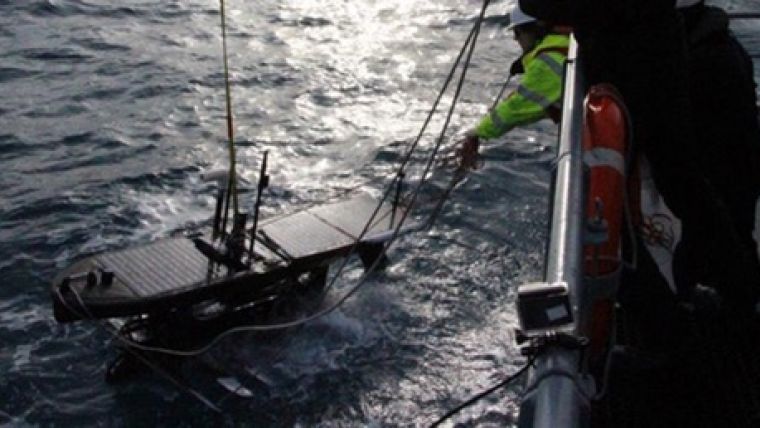Scripps Scientists Collaborate with Icelandic Coast Guard on Wave Study
Scripps Institution of Oceanography at the University of California San Diego, USA, is collaborating with the Icelandic Coast Guard (ICG) on a study of the extreme ocean surface conditions that characterise the waters off Iceland’s coast. Scripps' physical oceanographer Eric Terrill and other scientists from Scripps first approached Icelandic officials with the concept of deploying a suite of marine instruments because of the unique ocean conditions that are found there.
Measuring the waves that form from high winds can be a challenge due to the difficulty of being at the right place and right time, according to Terrill. In analysing the statistics of the global wave climate, it became clear that Icelandic waters are a natural laboratory for studying extreme conditions as conditions in excess of sea state 7 are the norm during the winter. The sea state 7 category corresponds to regular wave heights between six and nine metres (20 to 30 feet). Rough seas are common around Iceland as a result of shifting winds moving across the high latitudes, and the waves encountering variable currents.
Interaction with Scientific Community
The collaboration between the Scripps scientists and the Icelandic Coast Guard was formalised on 13 February 2017 by the signing of a memorandum of understanding by senior leaders from both organisations as well as Iceland's Marine Freshwater Research Institute and the University of Iceland. The scientists, sponsored by the Office of Naval Research, are expected to continue their ocean observations of waves, winds, pressure, temperature and currents for at least two more years and will be broadening their interaction with the greater Icelandic scientific community in the coming months. It is one of several ventures Scripps researchers undertake with national governments to improve observations of nature and protect marine environments.
Luca Centurioni, another Scripps oceanographer and director the Global Drifter Program buoy network, said understanding and forecasting surface ocean currents and weather around Iceland requires frequent direct observations from drifting buoys that collect and report data in real-time via satellite to support numerical weather prediction and to calibrate satellites.
Wave and Oceanographic Measurements
The scientists will bring new instruments to measure waves, currents, atmospheric pressure, and sea surface temperature. Already, an expendable buoy developed by Terrill’s technical team has reported seas in excess of 12 metres (40 feet) in its first week of operation in the chilly Icelandic waters.
Among the other instruments are expendable drifters that will be deployed by the Icelandic Coast Guard during normal patrols and training. In addition, two Liquid Robotics Wave Gliders that harness the energy of surface waves to provide propulsion will be operated during the pilot phase of the study. These will make long-duration mobile measurement platform of the winds and ocean response to the weather.
The measurement network of buoys and gliders will improve the scientific understanding of the coupling across the air-sea interface, a critical component for ocean, atmosphere and climate research. The study also provides ocean condition situational awareness to the ICG for their maritime mission to serve and protect commercial marine traffic, and will improve the ocean forecast models they rely upon for patrol planning. Direct measurements of ocean currents can also greatly improve the effectiveness of search and rescue missions.
According to Ásgrímur L. Ásgrímsson, chief of operations of the Icelandic Coast Guard, the data collected by the two Wave Gliders and the buoys will be of value for relevant Icelandic institutions for future weather, wave and current predictions and thus contribute to safer maritime traffic.

Value staying current with hydrography?
Stay on the map with our expertly curated newsletters.
We provide educational insights, industry updates, and inspiring stories from the world of hydrography to help you learn, grow, and navigate your field with confidence. Don't miss out - subscribe today and ensure you're always informed, educated, and inspired by the latest in hydrographic technology and research.
Choose your newsletter(s)
























